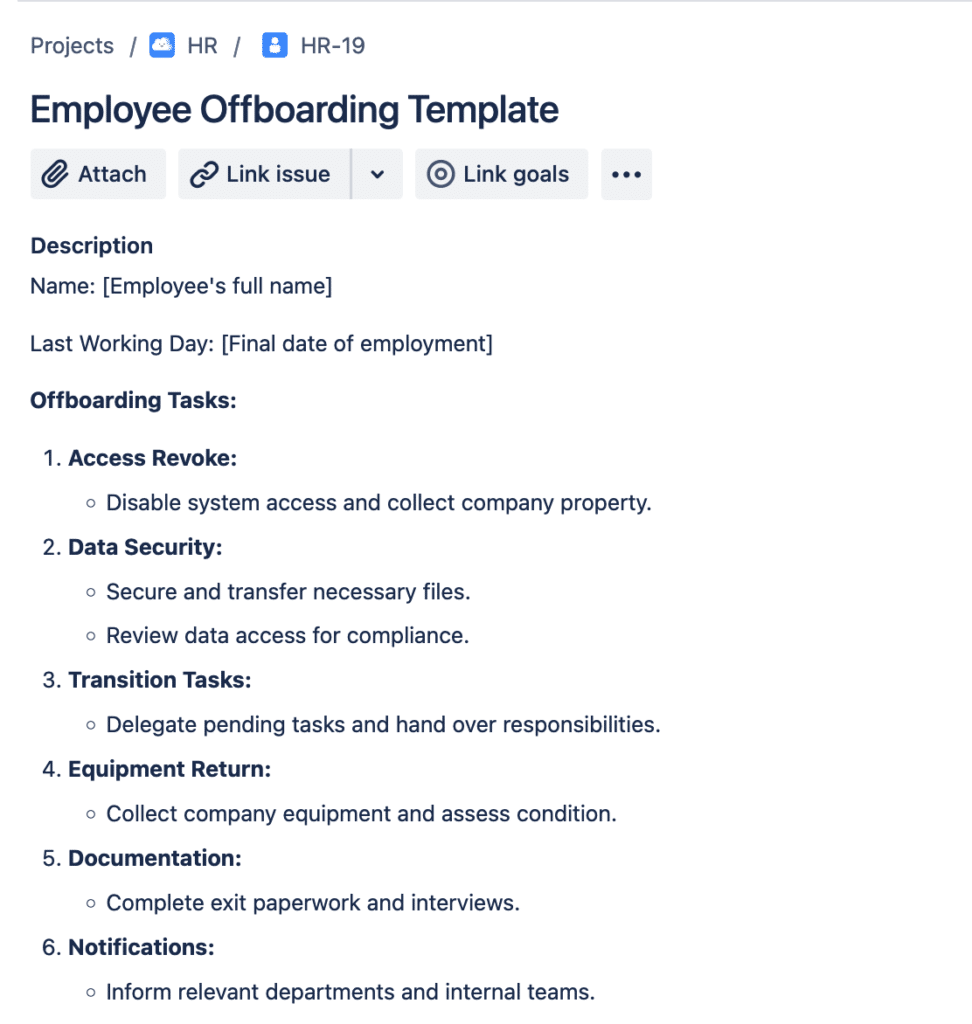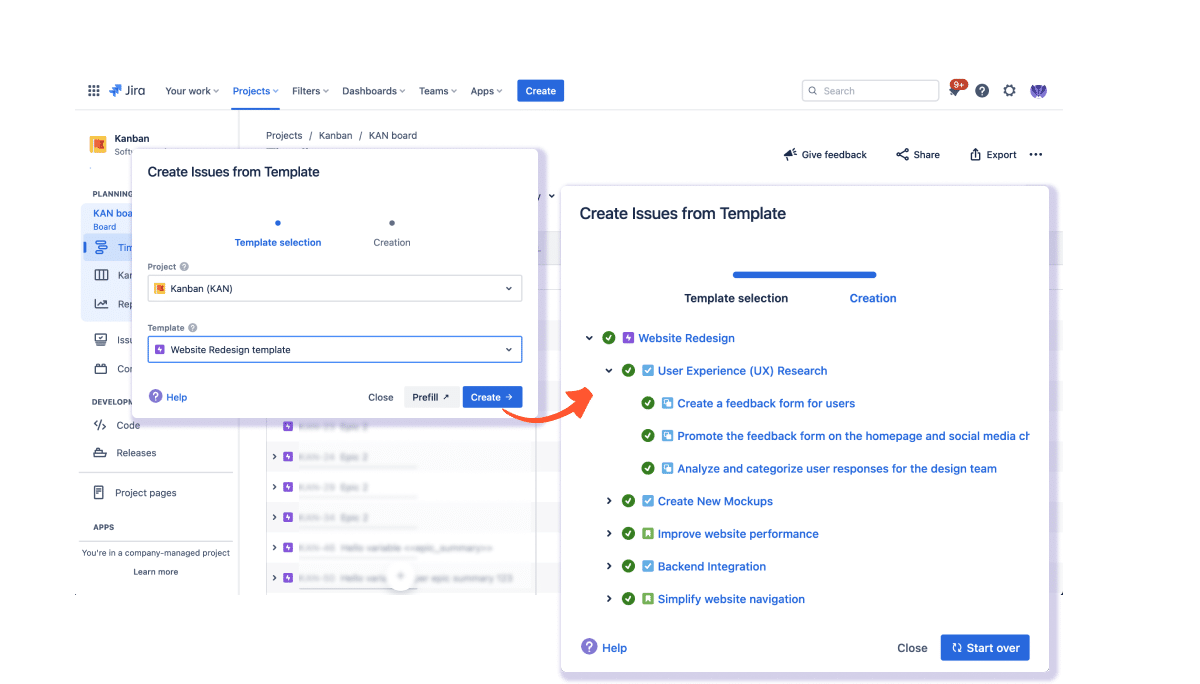HR
Our Jira Employee Offboarding Template

Managing employee offboarding systematically is crucial in HR to ensure a smooth transition for both the departing employee and the organization. Here's an example of an Employee Offboarding description template in JIRA's wiki format.
Copy and paste this example into your Jira issue while issue creation and then save it as a Jira employee offboarding template with Easy Templates app.
h2. Employee Details
* Name: [Employee's full name]
* Department/Team: [Associated department or team]
* Position: [Job title]
* Last Working Day: [Final date of employment]
h2. Administrative Tasks
* Final Payroll: [Date when the final salary, including any bonuses or unused vacation, will be processed]
* Benefits Termination: [Details about ending health insurance, retirement plans, or any other employee benefits]
* Company Property Return: [List of items to be returned, e.g., "Laptop", "ID card", "Mobile phone"]
h2. IT Tasks
* Email Deactivation: [Date when the email account will be deactivated]
* Access Revocation: [List of systems or platforms where access should be removed, e.g., "CRM", "Intranet", "Company Slack"]
h2. Knowledge Transfer
Provide details about how and to whom the departing employee's tasks and responsibilities will be transferred.
h2. Exit Interview
* Scheduled Date: [Date for the exit interview]
* Objective: [Purpose of the interview, e.g., "Gain insights into the employee's experience and reasons for departure."]
h2. Return of Personal Items
List any personal belongings the employee needs to retrieve before departure.
h2. Farewell Activities (if applicable)
Details about any farewell events, acknowledgments, or communications planned for the employee.
h2. Post-Departure Actions
* Alumni Network Invitation: [Details about inviting the employee to an alumni network, if available]
* Feedback Review: [Procedure to review and act upon feedback obtained during the exit interview]
h2. Notes/Additional Information
Any other relevant details or context about the offboarding process.
This template aims to guide HR teams through the multifaceted steps of the offboarding process. Ensure all critical aspects of an employee's departure are managed effectively and professionally. Adjust the template based on your organization's specific HR practices and needs.
Reuse this template in your Atlassian Jira with “Easy Templates for Jira” app.
Easy Templates for Jira Issues
30-Day free trial!
FREE forever For up to 10 users
Easy Jira Issue templates in Jira provide a predefined structure for reporting problems, ensuring that all essential details are captured right from the start.
This leads to quicker issue resolution, minimizes back-and-forth communication, and ensures that developers and teams have all the information they need to address the problem effectively.
What Is Employee Offboarding in HR?
Employee offboarding in HR refers to the structured procedure for managing an employee's transition out of an organization. This encompasses both voluntary exits, such as resignations or retirements, and involuntary ones like terminations or layoffs.
The process involves tasks such as finalizing paperwork, retrieving company property, closing IT accounts, conducting exit interviews, and ensuring knowledge transfer. A comprehensive offboarding process safeguards the company's assets and information, provides insights into employee experiences and reasons for departure, and maintains positive alumni relationships for potential future engagements.
How Employee Offboarding Template Can Help With HR Processes:
Employee Offboarding Template serves as a structured guide for handling the departure of employees. This template is designed to capture essential information, such as the employee's name and contact details, the reason for their departure, and the specific date they will leave the organization. Additionally, this template outlines the necessary tasks to complete during the offboarding process, along with any other pertinent information.
Implementing a standardized offboarding template ensures that each departure is managed consistently and systematically. This approach not only simplifies the tracking and prioritization of offboarding activities but also enhances overall efficiency in human resources management. By maintaining uniformity in documentation, this template(s) play a crucial role in streamlining HR processes, allowing for more effective management of employee transitions.

